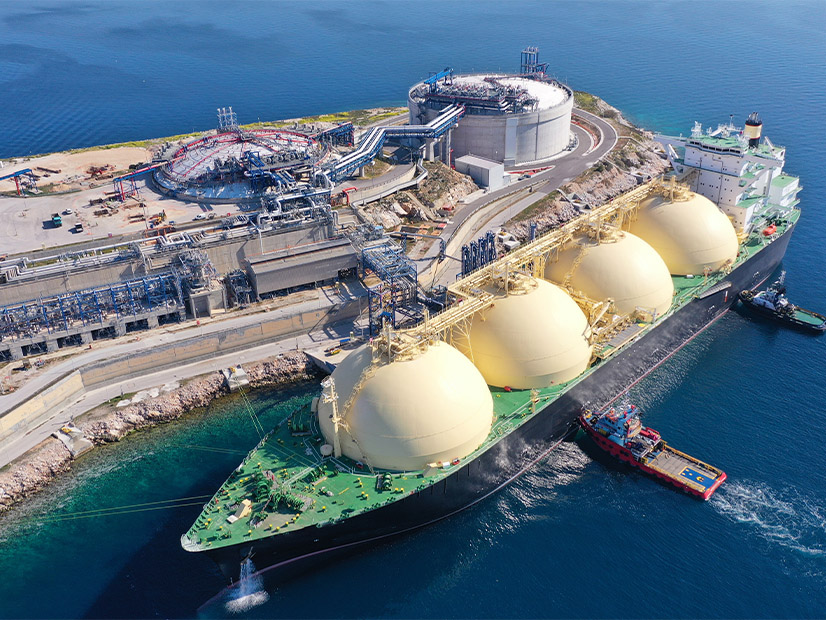
The global energy crisis has created the potential for the U.S. to clean up its electricity supply while providing energy security to the world through LNG exports, a panel of energy experts said Wednesday.
Current global LNG market conditions place the “burden” of fulfilling new LNG demand from Europe and Asia Pacific on the U.S., Renee Pirrong, director of research and analysis at Tellurian, said during the Energy Dialogues webinar.
“The market is going to be quite tight for years to come, and the U.S. is the only place where you can get scalable, additional liquefaction supply in the context of Europe potentially needing 150 [million] to 170 million tons of LNG imports per year,” she said.
That level of demand could allow the U.S. to displace natural gas from its power market for liquefaction and exportation, according to Gabriel Collins, a fellow at Rice University’s Baker Institute for Public Policy.
There is also case for “accelerating the small modular nuclear revolution in the U.S., and that allows you to scale low-carbon power without having to think about nuclear nonproliferation,” he said. “It’s a domestic opportunity that captures the best of both worlds.”
Kevin Book, managing director of ClearView Energy Partners, agreed that providing global energy security while also greening the U.S. grid is an “incredible opportunity,” but it will require new gas transmission infrastructure.
“For us to be able to push our molecules out into the water, we need to have connection from the production site to the coasts,” Book said.
Market Status
The global LNG market has seen “huge” supply and demand shocks this year, according to Pirrong.
New demand levels for LNG in Europe that stem from Russia’s invasion of Ukraine can be seen in the region’s usage in 2022 alone. Historically, European demand was between 35 million and 65 million tons per year, but so far this year the continent has consumed 63 million tons, on track to 125 million tons by year-end, Pirrong said.
Europe has reached the top spot on the “willingness to pay scale” for the foreseeable future, she said.
On the supply side, Russia will no longer be among the top LNG exporters in the world. About 140 million tons of Russian LNG exports are either in jeopardy or “completely wiped off the table,” she said.
Those market shifts will create what Pirrong calls “demand destruction” in the long-term LNG market.
“It’s ironic and a little bit sad that Europe, which has been to some degree lecturing the rest of the world against investing in gas, is now diverting LNG away from the markets that needed it the most in the midst of this crisis to shore up its own supply,” she said.
If that trend persists, she added, many countries that were transitioning to LNG will return to coal. As a result, the International Energy Agency expects coal investments to trend up this year and reverse a decade of declining investment.
“This points to a long-lasting period of high gas and energy prices as a whole,” Pirrong said. “The only antidote to this is more investments in traditional energy projects, including LNG, but it is also important that those projects are in regions that support global energy security aims.”
Global energy decisions that are made in 2023-2024 are likely to be the most “consequential” for the climate, according to Collins.
“If there’s not an expectation of abundant, affordable and secure gas supplies at some point reasonably near in the future, we’re likely to see additional coal locked in,” he said.
The extension of coal as a resource will go beyond simply adding a few years of operation to plants that heretofore were headed for decommissioning. Instead, Collins said, coal plants in China, India or Southeast Asia that were potentially “on the fence” will come online and run for up to 50 years.
“There’s a lot at stake here, and gas is right at the center of that conversation,” he said.

